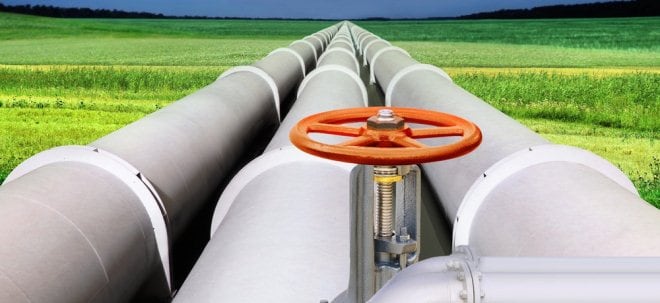Setting the next milestone to building a cleaner, stronger economy
OTTAWA, ON, Dec. 12, 2024 /CNW/ - Canadians are increasingly experiencing record-breaking extreme weather that threaten our homes and livelihoods, make groceries more expensive, harm our personal health, drive up insurance rates, and impose significant costs across the supply chains of our economy. Building a cleaner economy is not only an environmental imperative, but an economic opportunity. Taking action to fight climate change is positioning Canada to be a global leader in the clean economy of the 21st century, creating good jobs while returning cost-savings for Canadian families.
Today, the Honourable Steven Guilbeault, Minister of Environment and Climate Change, announced that Canada will aim to reduce emissions by 45–50% below 2005 levels by 2035, setting a responsible and ambitious target that maintains our path to a strong, net-zero economy.
The 2035 target builds on Canada's existing 2030 target, which aims to reduce emissions by 40–45% below 2005 levels. In 2015, Canada's emissions were projected to increase by 9% by 2030 when compared to 2005 levels but we are now successfully bending the curve. Thanks to the efforts of all Canadians, our economy continues to grow, all while we're cutting pollution.
Canadians have made this progress possible. And Canada is poised to continue this progress by attracting up to $25 billion every year to reduce emissions, spark innovation, and expand access to sustainable options. The newly established target for 2035 will ensure Canada's sustained momentum towards a clean and sustainable economy by mid-century.
In the near term, Canada will seek feedback on how to help companies take advantage of the economic opportunities that come with building a clean economy. This will include engaging with a broad range of partners and stakeholders to examine the role technologies that permanently remove carbon dioxide can play in this transition. In doing so, Canada will signal the importance of this suite of emerging technologies and explore the benefits and challenges associated with them, including how to most effectively leverage their economic potential.
The 2035 target was informed by the best available science, Indigenous Knowledge, international climate change commitments, consultations with provinces and territories and expert advice. It will orient the next decade of climate action in Canada, while reflecting the needs of Canadians and the economy. The climate action we take today will lead to a greener, more prosperous low-carbon economy tomorrow.
Quotes
"Thanks to the work of Canadians from every region of this country, we are succeeding in cutting our pollution to the lowest level in over 27 years, while our economy is growing. We are doing that by supporting the industries that are creating jobs for Canadians, alongside measures that help Canadians with cost-savings in their daily lives. Today is about building on that progress. As we look ahead to the next three decades, this target keeps us on track to keep the promise to our kids and grandkids that the world we leave behind for them will be safe, sustainable, affordable and prosperous."
– The Honourable Steven Guilbeault, Minister of Environment and Climate Change
Quick facts
- The Canadian Net-Zero Emissions Accountability Act established a commitment to set five-year national emissions reduction targets, 10 years in advance, to achieve net-zero emissions in Canada by 2050. The 2035 target is the next step in achieving this important goal.
- Global temperature increases are already reaching 1.1 °C and continuing to rise. Limiting global temperature increase to between 1.5 °C and 2 °C, as agreed upon in the Paris Agreement and which the overwhelming majority of climate experts view as critical, requires urgent and immediate greenhouse gas emission reductions.
- The Canadian Net-Zero Emissions Accountability Act requires the federal government to set a greenhouse gas emissions reduction target for 2035 by December 1, 2024, and to publish the 2035 Emissions Reduction Plan by the end of 2029.
- All credible net-zero scenarios suggest a significant amount of carbon dioxide removal will be needed to achieve global climate goals. The Intergovernmental Panel on Climate Change has recognized three ways that cardon dioxide removal can complement direct emissions reductions: helping to lower net emissions in the near term, enabling net-zero emissions in the medium term and achieving net-negative emissions in the longer term.
- Canada's Carbon Management Strategy recognizes the need to scale up solutions that permanently remove emissions from the atmosphere, since some residual emissions are likely to remain despite aggressive mitigation efforts, including in agriculture, aviation and shipping.
- Thirty-five percent (35%) of Canada's goods exports come from emissions-intensive and trade-exposed sectors, with up to 40% of domestic greenhouse gas emissions being driven by foreign demand—approximately three times as much as the U.S.
Related products
- 2035 Emissions reduction explainer
- Backgrounder: What you need to know about Canada's 2035 emissions reduction target
Associated links
- Net-Zero Advisory Body's September 2024 report – Climate's Bottom Line: Carbon Budgeting and Canada's 2035 Target
- Canadian Net-Zero Emissions Accountability Act
Environment and Climate Change Canada's X page
Environment and Climate Change Facebook page
Environment and Natural Resources in Canada's Facebook page
Environment and Climate Change Canada's LinkedIn page
Environment and Climate Change Canada's Instagram page
SOURCE Environment and Climate Change Canada

